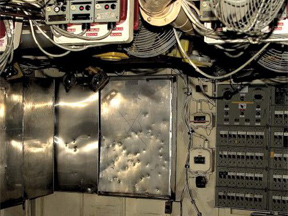
While serving the country within the US Navy, the US Marine Corps, or the US Coast Guard, a veteran is likely to face a lot of dangers. In the 20th century, they confronted a different problem that is not related to war, work accidents, or tough conditions performing the job.
The most common material found on every ship built after 1900 was asbestos. Even though it has great insulation properties and effectively prevents a ship's components from heating up, lengthy exposure to this material leads to respiratory diseases like:
- mesothelioma
- lung cancer
- cancer of the larynx
- cancer of the bronchus
- gastrointestinal tract cancer
Another important aspect related to asbestos exposure is that an individual does not get sick for a short period after exposure. Asbestos exposure-related diseases have a latency period of 20-50 years. Many companies manufactured products for the US Navy, which, in turn, used them for the shipbuilding process. So, the US Navy purchased products like gaskets, tiles, turbines, engines, and boilers that were coated with asbestos.






Damage control men, enginemen, firemen, fire control technicians, storekeepers, boatswain's mates, gunner's mates, or carpenters were exposed to asbestos during their daily work on a ship. A damage control man was in charge of every mechanical, electrical, or other kind of system that was damaged, having to work on:
- alarm system
- maintain the watertight shipboard integrity
- repairing and maintaining the emergency and firefighting equipment
They were also responsible for:
- preventing the ship from flooding
- detecting and decontaminating biological and nuclear threats
In addition, a damage control man was the person responsible for training the personnel in the matter of firefighting and repairing simple damages. Together with the fire control technicians, they worked on fire prevention and the supervising work needed.
A damage control man performed his job both on a ship and onshore. When the ship landed, he had other duties. First of all, the facility structures had to be maintained and repaired, but also the units owned by the Coast Guard. Then, a damage control man had to repair and install roofs, siding, sheetrock, windows, doors, floors, cabinets, plumbing fixtures, and every type of welding reconditioning.
The asbestos exposure took place mostly from the equipment a damage control man used during his duty. The gloves and the clothing contained asbestos fibers to be protected against eventual burns after fighting with fire. They were assigned to the damage control room, engine room, or boiler room, which also contained a lot of asbestos. Inhalation of asbestos dust emanating from the damaged products in these rooms was extremely facile.
The fire control technicians were exposed to asbestos due to their line of work in the control and navigation rooms. They would work on equipment that contained asbestos components, such as wire insulation and cable wrap. As the ship's personnel, they were constantly surrounded by plenty of other asbestos products, putting them at risk of developing a life-threatening disease.
Michael K., damage control man on the USS Washburn AKA-108, said: "We were exposed to asbestos every day. As a damage control man, I was told I was exposed to this toxic mineral while I was wearing equipment lined with asbestos." He died in 2010 from gastrointestinal cancer caused by asbestos exposure.
